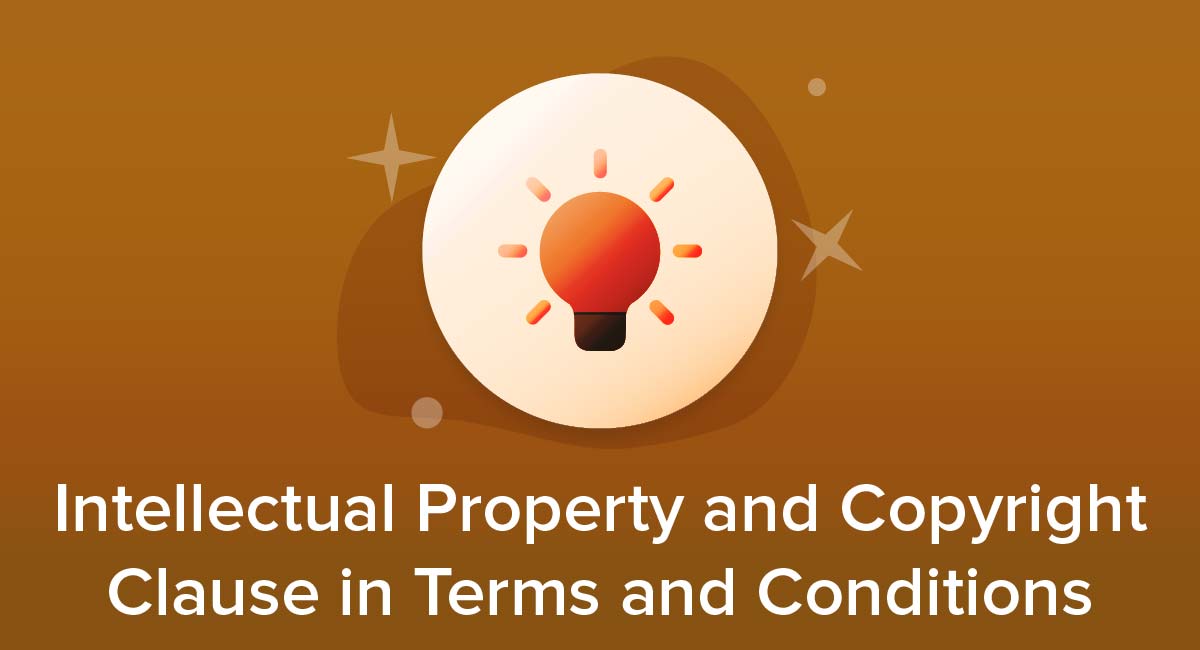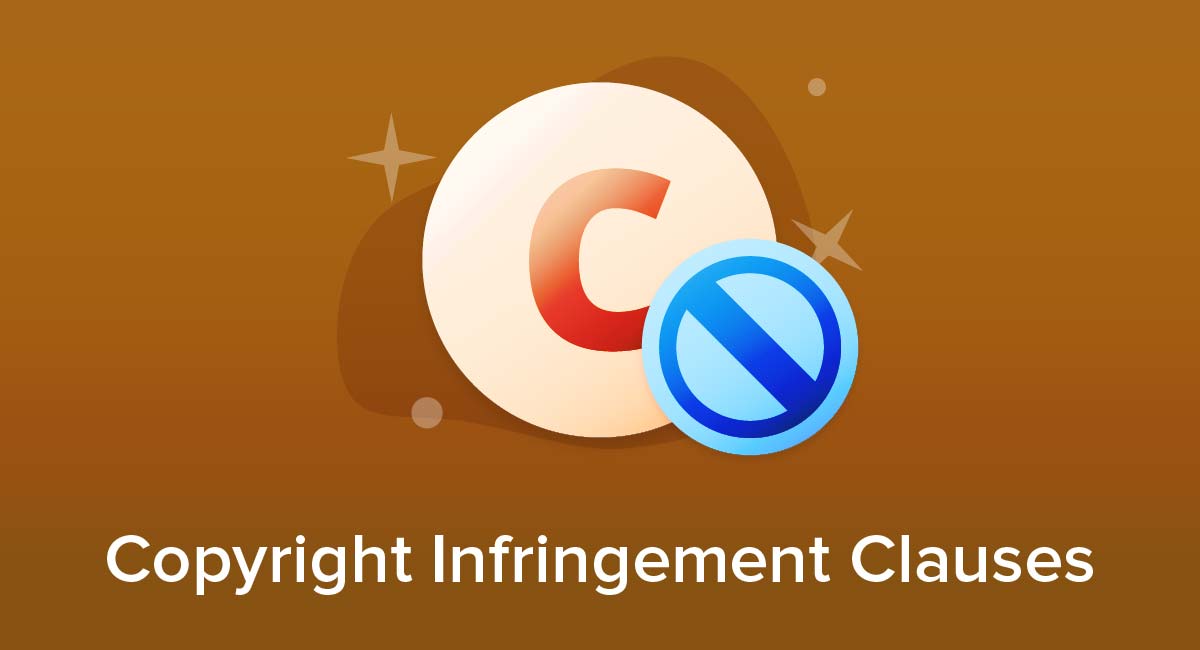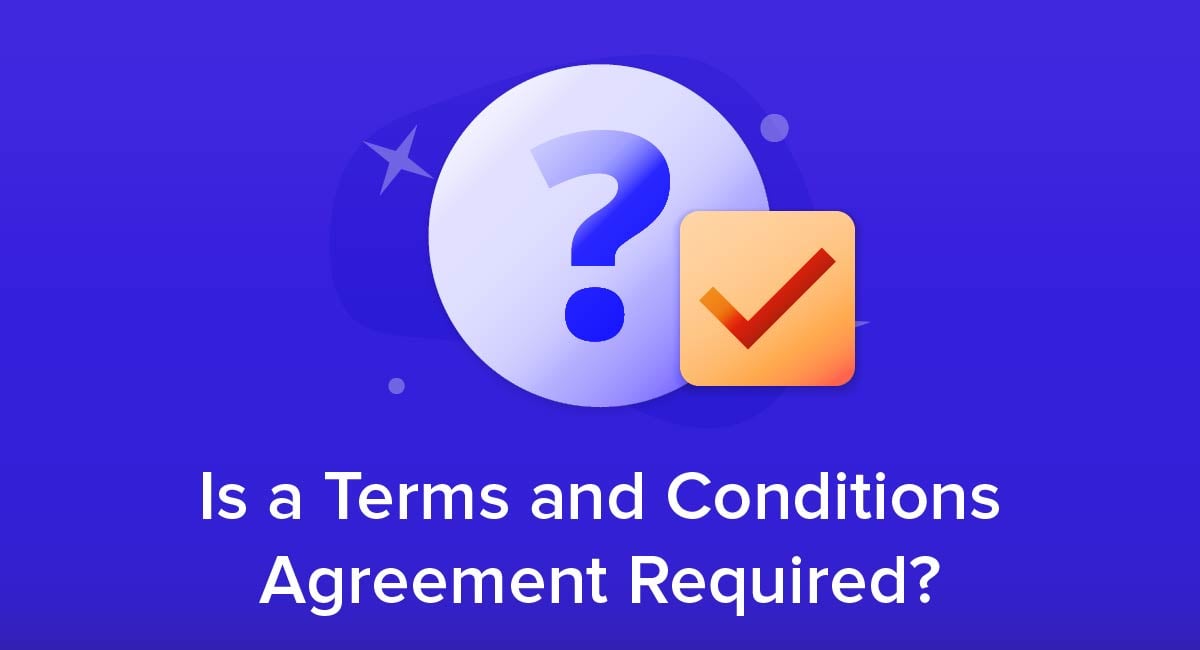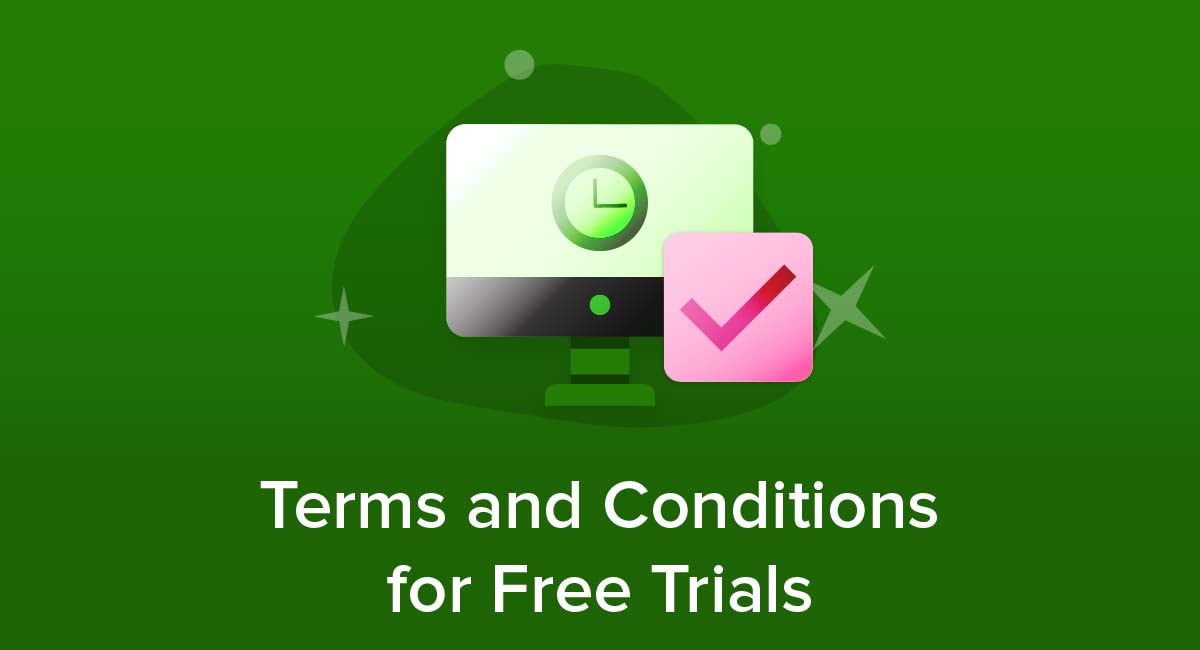
Even though you don't charge for a free trial, you are still creating a business-to-consumer relationship with the user. A Terms and Conditions agreement will allow you to set out the rules for how that relationship will work.
While the agreement may not cover every possible outcome, clear Terms and Conditions can resolve most potential points of conflict and reduce the risk of legal dispute.
Here's what you need to know about creating a Terms and Conditions agreement for free trials including why you should have one, how to draft one, and how to display it after you have one created.
Our Free Terms and Conditions Generator is created to help you generate a professionally drafted agreement that can include various terms and conditions for your site and/or app.
- Start the Free Terms and Conditions Generator from our website.
- Select platforms where your Terms and Conditions will be used (website, app or both):
- Answer a few questions about your website or app information:
- Select the country:
- Answer a few questions about your business practices:
-
Enter your email address where you'd like to receive the new Free Terms and Conditions and click "Generate":
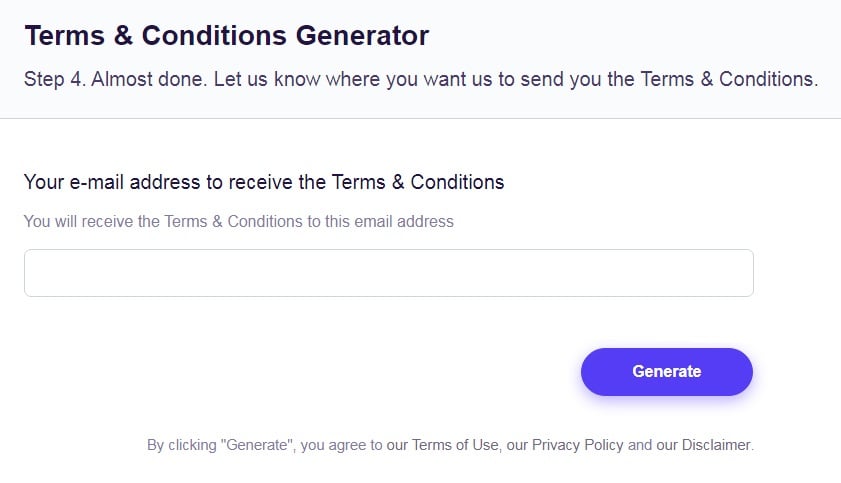
Once generated, you can copy and paste your Free Terms and Conditions agreement on your website or app or link to your hosted Free Terms and Conditions page.
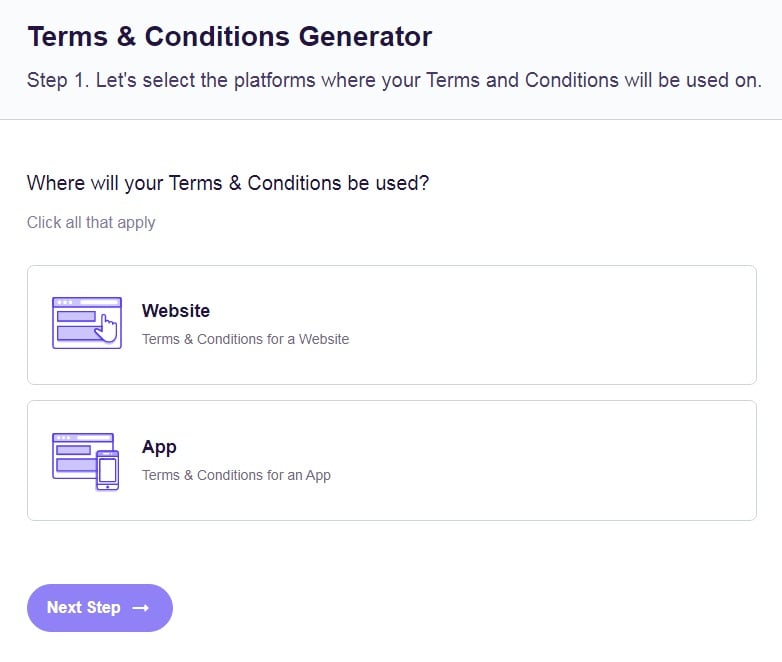
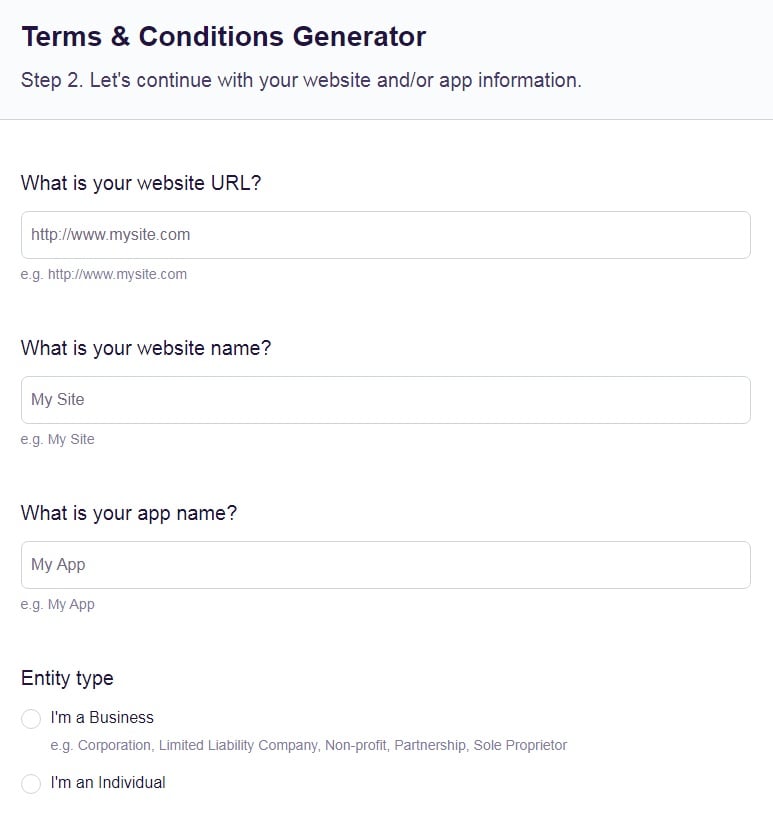
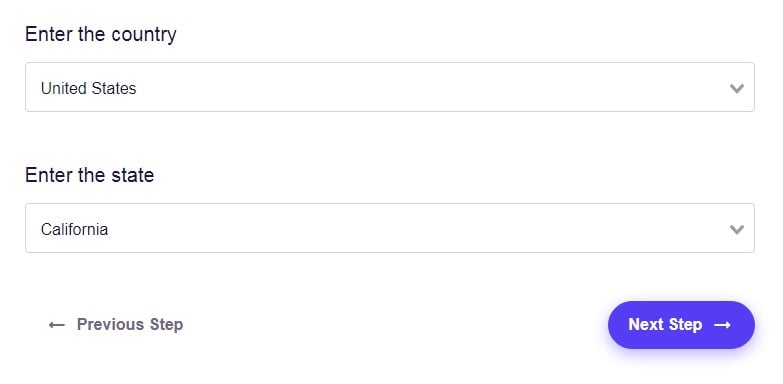
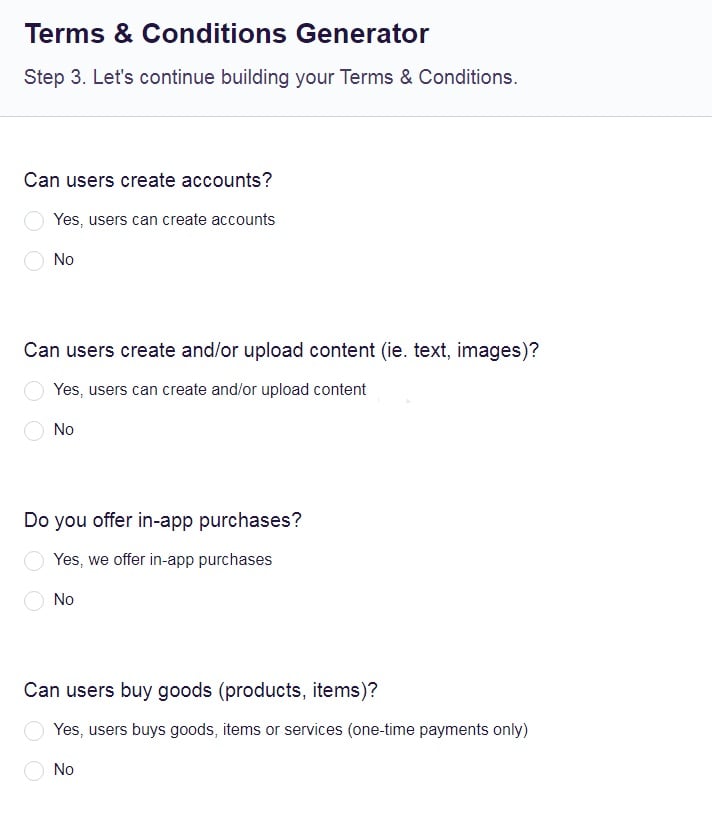
- 1. What's a Terms and Conditions Agreement?
- 2. Why Have Terms and Conditions for Free Trials?
- 3. How to Create Terms and Conditions for Free Trials
- 4. What to Put in a Terms and Conditions Agreement for Free Trials
- 4.1. Payment Terms
- 4.2. Termination
- 4.3. Price Changes
- 4.4. Service Level You Guarantee
- 4.5. User Responsibilities
- 4.6. Limitation of Liability and Warranty Disclaimer
- 4.7. Governing Law and Jurisdiction
- 4.8. Dispute Resolution
- 4.9. Intellectual Property
- 4.10. Privacy and Data Protection
- 5. How to Display and Get Consent to a Terms and Conditions Agreement for Free Trials
- 6. Summary
What's a Terms and Conditions Agreement?
You can think of your Terms and Conditions agreement a bit like a rulebook. It will cover the rules for how a relationship between you and a customer will work. The main aim of this type of legal agreement is to anticipate situations where either side is unclear about an aspect of that relationship and give clarity in advance.
In most cases, Terms and Conditions agreements are general rules that apply to all of your dealings with customers. They work alongside any documents that detail the specifics of a particular transaction. For example, you might have an order form that details the product, quantity and price for a particular purchase, and then note that your Terms and Conditions also apply to the order.
Why Have Terms and Conditions for Free Trials?
You might assume that if somebody is taking out a free trial and isn't yet a paying customer, you don't need Terms and Conditions yet. That could be a big mistake. You are still creating a relationship with the customer, and this could create legal questions that need resolving.
Examples could include you taking money from the customer when a free trial ends and regular service begins, or you having rules the customer must follow while using a product or service during the free trial.
Without Terms and Conditions, it could be difficult, expensive and time consuming to make sure things happen the way you want and expect.
If you can show a customer agreed to your Terms and Conditions, it's less likely you'll wind up in a legal dispute. If you do, you'll normally stand a better chance of winning if you can point to a clear Terms agreement.
How to Create Terms and Conditions for Free Trials

As we've noted, a Terms and Conditions agreement covers a legal relationship. Normally that relationship is based on a contract between you and a customer where:
- You give something (such as a service or use of a product, eg rental)
- The customer gives something (money)
- You both agree to follow rules (such as you making sure the service is available as described or the customer using the service in a certain way)
A free trial works in a similar way and the only real difference is that you are effectively waiving the customer's obligation to give you money for a set period. You still have a legal relationship.
Because of this legal relationship, most terms and conditions that apply to providing a service (or access to a product) will also apply to a free trial period. This means you could:
- Use your normal Terms and Conditions agreement and include any points specific to a free trial
- Use your normal Terms and Conditions but add a specific section at the start that addresses the free trial period
- Produce a dedicated Terms and Conditions agreement just for the free trial period
Most businesses offering free trials use a model where the customer automatically moves over to the regular paid service unless they cancel before the end of the trial period. If that's the case for you, a dedicated document for the free trial isn't sufficient. You need the customer to read and agree to your full Terms and Conditions agreement before starting the free trial.
What to Put in a Terms and Conditions Agreement for Free Trials

Throughout the rest of this section we'll cover key points to address in Terms and Conditions agreements for services and access to products, including those which apply or are particularly relevant to free trial periods.
Payment Terms
This section should detail the price customers will pay (or where they can find the relevant price if you offer multiple services). It should also detail how payment works, for example:
- When payments are due, and what period of service each payment covers
- What happens if payments are late
- What currency the price is in, and what happens if exchange rates vary
- Acceptable methods of payment
- Whether you charge processing fees for particular methods of payment
With a free trial that rolls over into a paid contract, you should clearly state:
- Payment will be due if the customer doesn't cancel before the free trial ends
- The customer has authorized you to take payment if they don't cancel before the free trial ends
You should also make clear when you will take the payment.
Study Gateway addresses free trial users providing payment details and the need to cancel the trial to avoid payment:
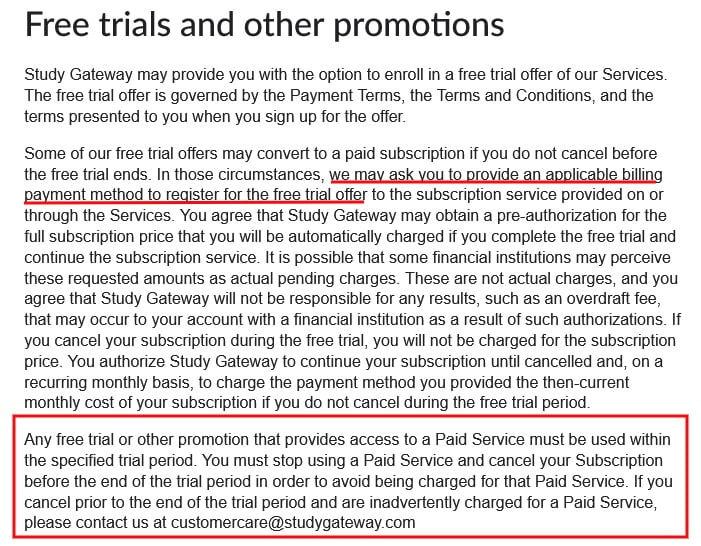
Termination
This will often be one of the last sections in terms and conditions, but it's arguably the most important point with the free trial model so you may want to include it early on. It should address:
- Whether your contract with the customer lasts for a fixed period or will continue until one side cancels
- The reasons that either side can use to cancel
- What happens if you stop trading or are involved in a merger or takeover
- How much notice you or the customer must give to cancel, including whether this varies depending on the reason for cancellation
- What, if anything, the customer must do when the agreement ends, for example returning equipment
- When the customer will lose access to the service or use of the product
- What happens to any data created during the service, for example the user's posts and other content on a member's only website
With a free trial, you should clearly state:
- How the customer can cancel the service before the free trial ends, including acceptable contact methods and any specific requirements
- The deadline by which they must cancel to avoid rolling over to a paid contract
If there's a risk of confusion, you could say which time zone applies. For example, somebody in California might think cancelling at 11pm local time on the last day of the trial was valid. If you class this as too late because you are based in New York, you should make this clear in the Terms and Conditions.
Instapage gives separate instructions for cancelling during the free trial and cancelling as a paid customer. Here's the first section outlining canceling during the trial period:

And here's the separate section that addresses the way to cancel when you're already on a paid plan and out of the free trial period:

Price Changes
Your Terms and Conditions agreement should detail your policy on prices changing.
Here's some information you can include:
- When you increase prices at regular intervals (eg yearly) or as and when you choose
- Whether the increase follows a formula (such as by a particular measure of inflation) or you decide the amount each time
- How much notice the customer will get of any price rise
- Whether the customer has the right to cancel in the event of a price rise, even if they are still on a fixed-term contract
Here's how The Impression explains the timescale for price increases:

Service Level You Guarantee
This section details any guarantee you give about the service you provide and what happens if you don't meet this guarantee. The three main approaches you can use are:
- Make clear that you don't guarantee a particular level of service, but you could say you will do your best to maintain service
- Detail the level of service you guarantee (such as a streaming site being available a particular proportion of time, or email requests getting a reply within a set period) and the compensation you offer if you fall short (such as extending the service period, issuing a refund or issuing a service credit)
- Refer to a separate Service Level Agreement and make clear that this document constitutes part of the Terms and Conditions
You should also make clear if anything varies during the free trial period, for example if the service level guarantee does not apply.
This could also be a good place to remind users of any restrictions that apply during the free trial period.
For example, a streaming service might only let free trial users watch a selection of videos from the full catalogue that is available to paying members. A photo editing tool might only let users create 100 images during the trial period.
Akeneo makes clear it doesn't guarantee any service level during the free trial. It also notes some features may be unavailable, though doesn't give details:
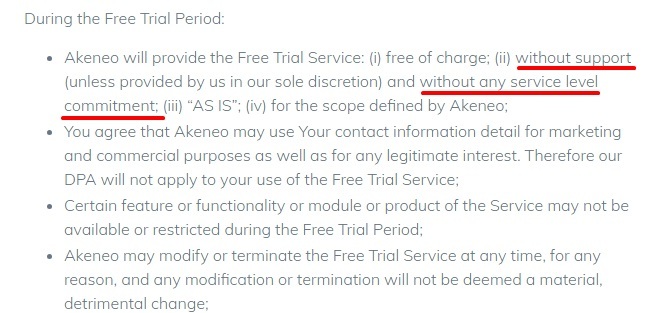
User Responsibilities
Set out any rules and restrictions that apply when people are using your service or accessing your product. What to include and how specific you should be will depend on the service.
Consider banning the following:
- Causing harm or damage to the service or your business
- Causing harm or damage to other users
- Using the service to do anything illegal
- Posting offensive or inappropriate material
- Breaching copyright
You could include some specific rules that apply to people using a free trial. For example, you could include bans on the following:
- Downloading any material from a streaming service
- Sharing access to the service with anyone else
- Taking out multiple free trials, for example by signing up with different email addresses or using a VPN or similar tools
You should also say what happens if somebody breaks the rules. This could include:
- You will delete the offending material
- You will temporarily suspend the user from accessing the service
- The user will forfeit their free trial offer
- You will ban the user from the service permanently
- You will take legal action for damages
If you reserve the right to suspend or ban people from the service, you should say whether they will get any refund and what happens to any material they've posted.
PowerDMS gives a clear list of banned actions:
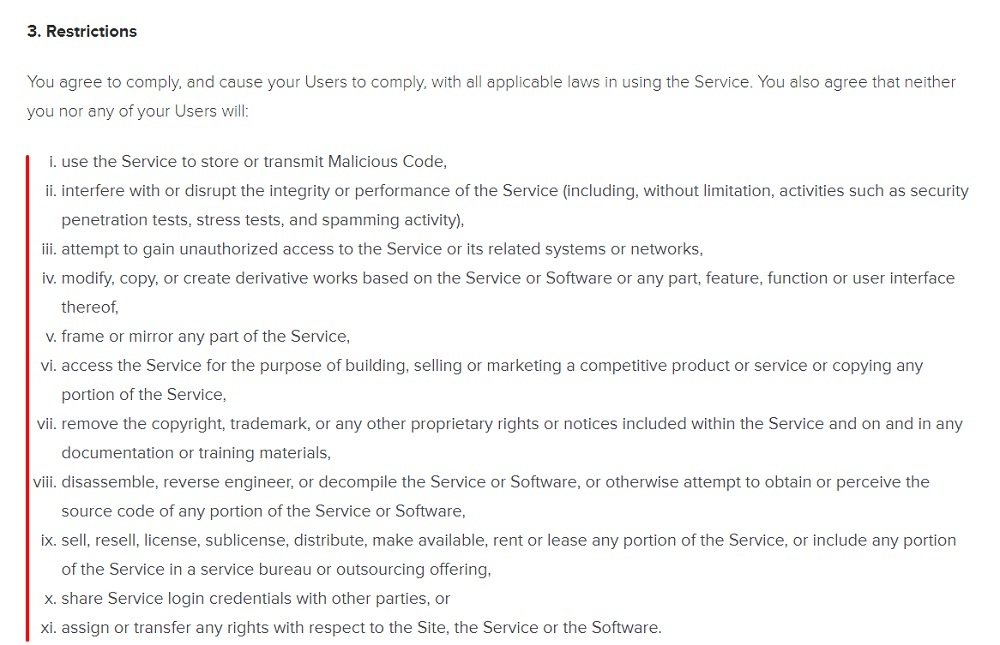
Limitation of Liability and Warranty Disclaimer
A Limitation of Liability and Warranty Disclaimer is a statement that restricts your legal responsibility for any damage or harm somebody suffers, for example, when using your service. It also notes that you are providing the product or service "as is" and without certain warranties.
You can either list specific types of responsibility that you are not accepting, or say that you do not accept any liability other than the legally required minimum.
CloudMask imposes limitations on both the types and amounts of liability it will accept:

Tecton explains it makes no warranties for the free trial services:

Governing Law and Jurisdiction
A Governing Law and Jurisdiction clause discloses which country or area's law applies to the Terms and Conditions agreement and the legal relationship between you and the customer., and which court system should hear any case involving your legal relationship. To avoid confusion, always pick a court system that uses the laws you listed in the governing law section.
It's particularly important to include this if you serve customers in other states or countries.
The governing law should be from a place where you or the customer are physically located, or where you do business.
Creatio makes clear which laws apply:

Hulu clearly states which court system has jurisdiction:

Dispute Resolution
This section says whether you and the customer must use alternative dispute resolution such as arbitration before taking legal action. It also says whether both sides must accept the outcome of this process or if they can reject it and proceed with a court case.
Zoom explains that arbitration is usually required instead of court action:
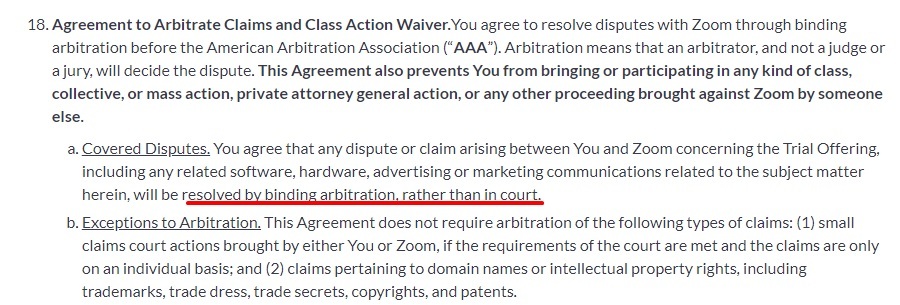
Intellectual Property
This can cover several points relating to intellectual property such as copyright or trademarks:
- You own the intellectual property to material in your site and service. You can also detail what rights you grant customers to use the material.
- Whether customers give up the intellectual property to any material they post to your site or service. If not, you may need them to grant you a license to use it.
- Who holds the copyright in any material users create while using your service.
- Whether you are claiming a fair use exemption from any third-party material you include in your site or service.
Qatalog covers both sides' intellectual property:
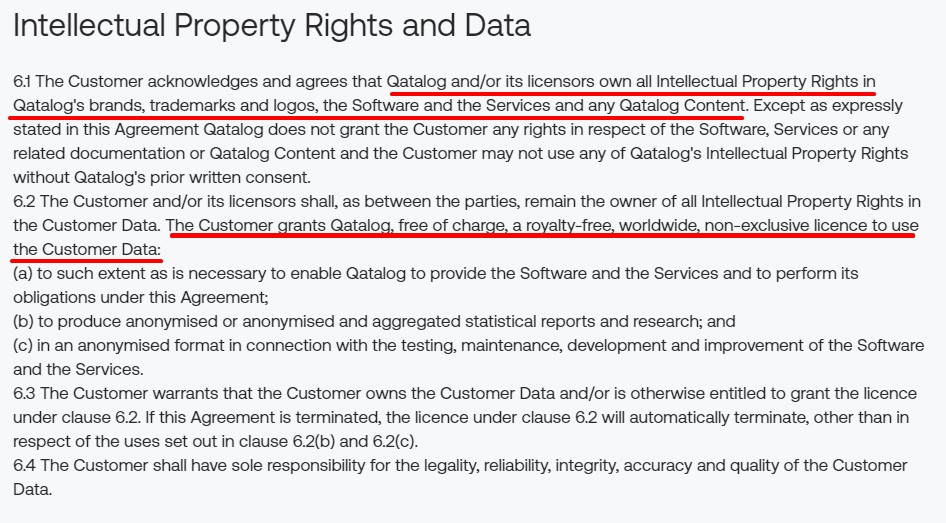
Privacy and Data Protection
You can and should include a clause that references your privacy practices, including a link to your Privacy Policy. This just helps ensure you're extra transparent with your users about your data collection and use.
Here's how Hulu links to its Privacy Policy and references it within its Terms agreement:

After you create your Terms and Conditions agreement, display it and request your users agree to it to make it enforceable. The next section will explore that process.
How to Display and Get Consent to a Terms and Conditions Agreement for Free Trials

People signing up for a free trial may not realize they are creating a legal relationship with you. This means you must take steps to be certain they have read and agreed to your Terms and Conditions before you let them take out the free trial.
You should also make sure they can check your Terms and Conditions agreement after signing up as this may reduce the chance of them making a complaint or taking legal action because they misunderstand their rights.
To achieve these goals, you should display and highlight your Terms and Conditions in multiple ways:
- As a dedicated page on your website
- As part of an overall "legal" page or section on your site and mobile app if applicable
- From a link in your navigation menu, such as the footer, that appears on every page
- At the point where the user signs up for an account
Zendesk includes a link to its terms and conditions page from the footer menu that appears on every page of its site:

You also need clear acknowledgement from the user that they have read and agree to the Terms and Conditions.
The best way to do this is by requiring users take a positive action to show consent, such as ticking an "I Agree" checkbox or changing a toggle setting before the customer is able to sign up to a service, including starting a free trial.
Clearly label this box or toggle that the customer agrees to the Terms and Conditions when checking or clicking it.
Do not use a pre-ticked checkbox or say that scrolling down a page constitutes acceptance of the terms and conditions. These are not clear enough signals that you can rely on to prove a customer agrees to the terms.
Xero requires users to actively tick a checkbox agreeing to its Terms before confirming their free trial. It also links to the agreement:
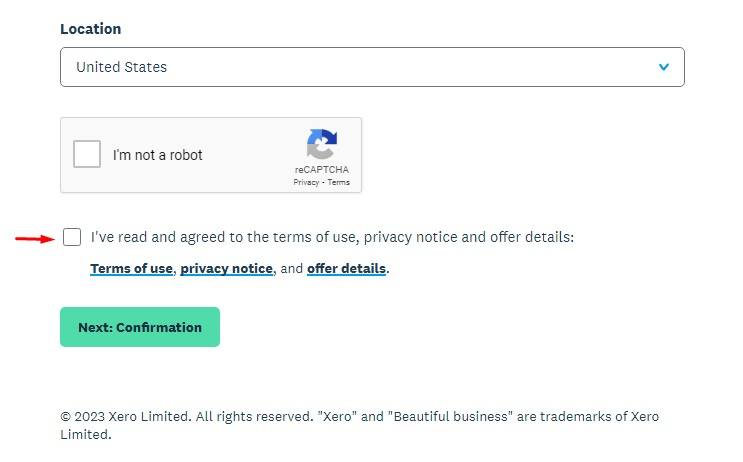
Summary
Here's what you need to know about Terms and Conditions agreements for free trials.
Terms and Conditions agreements are the rules for the relationship between you and a customer. They reduce confusion and the risk of legal dispute.
You have a legal relationship with a customer (or potential customer) even when running a free trial. This means you need terms and conditions to manage the relationship.
The best option is to have a Terms and Conditions agreement that covers both the trial period and the paid service. This is an absolute must if your setup means customers roll over to a paid membership once the free trial ends unless they cancel.
Points to include in a Terms and Conditions agreement include:
- Payment terms including taxes, deadlines, currencies and fees
- Termination: How either side can end the legal relationship, for what reasons, and what happens next
- How future price increases work
- Any service level guarantee you offer and what happens if you don't meet it
- Users' responsibilities and restrictions such as banned actions and the consequences
- Limitations on your liability and a disclaimer of warranties
- Which country or area's law applies and which court system will hear any case
- Whether you must use alternative dispute resolution before going to court
- How intellectual property rights work
- Your Privacy Policy
Points that you should specifically include in your Terms and Conditions for a free trial include:
- Whether the customer will automatically move to a paid membership at the end of the free trial (and, if so, that they authorize payment)
- Any limits to the service that specifically apply during the free trial
- Any restrictions such as banned actions that specifically apply to free trial users
Make certain that potential customers can easily read the Terms and Conditions both before and after signing up for a free trial. The best way is a dedicated web page, with clear links throughout your site and at the point of signing up for the trial.
Require customers to clearly indicate they agree to the terms before they can sign up to the free trial. Use a checkbox or similar method to require a positive action and remove any ambiguity.
